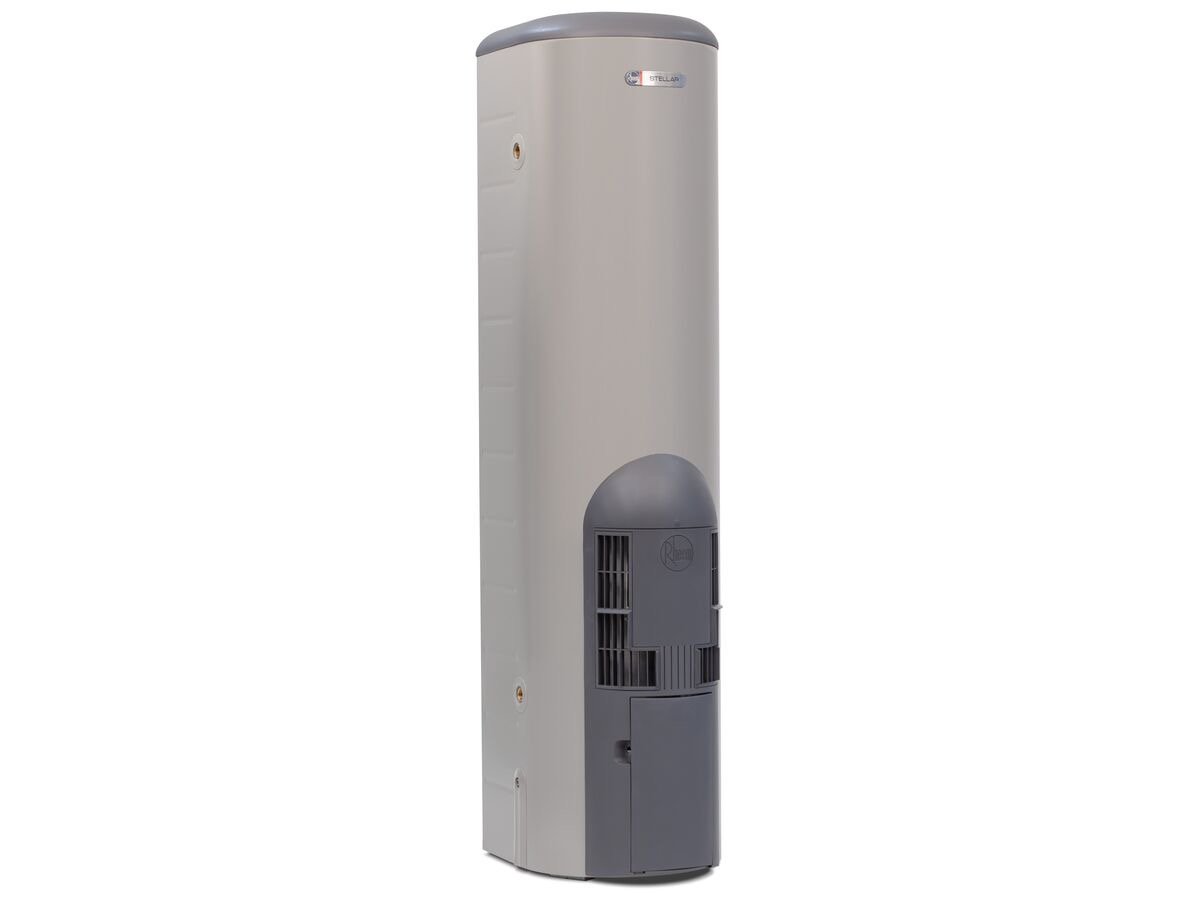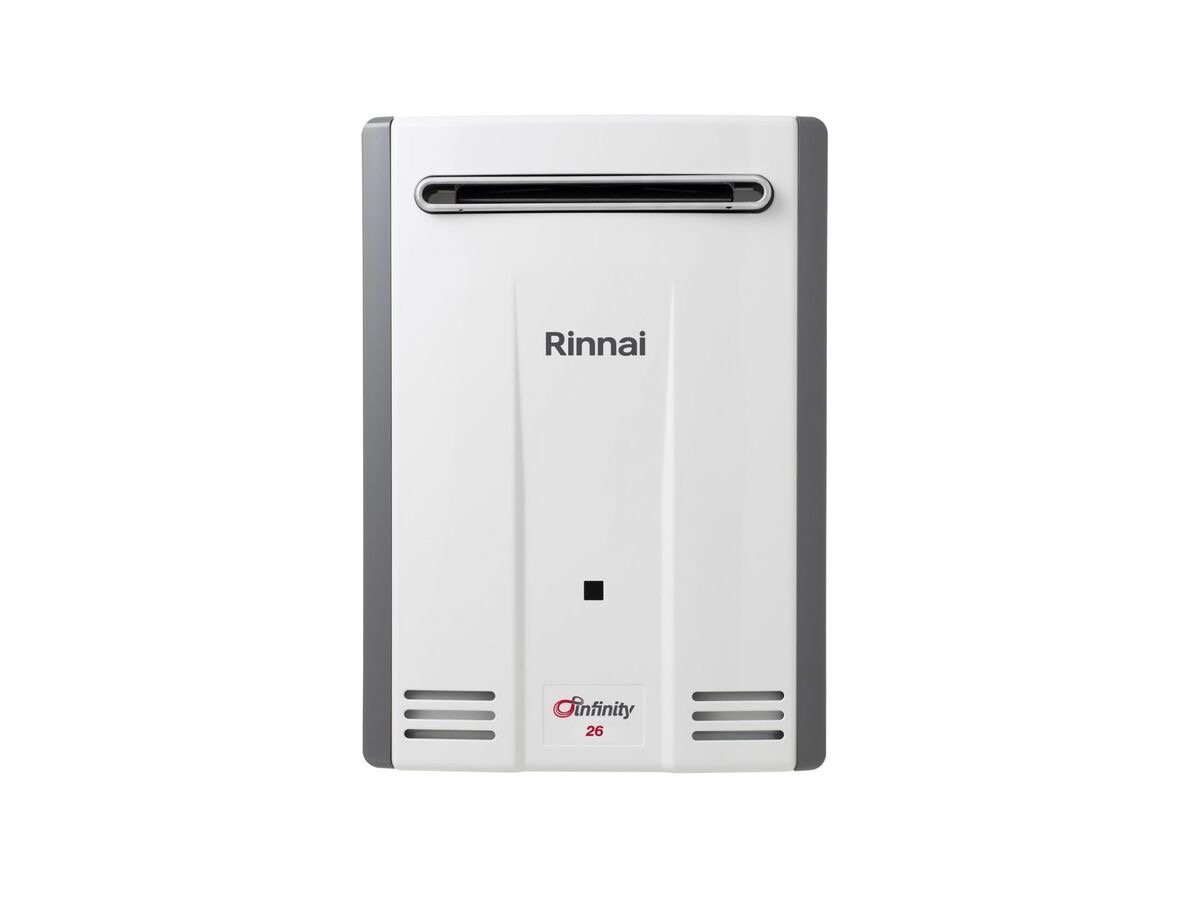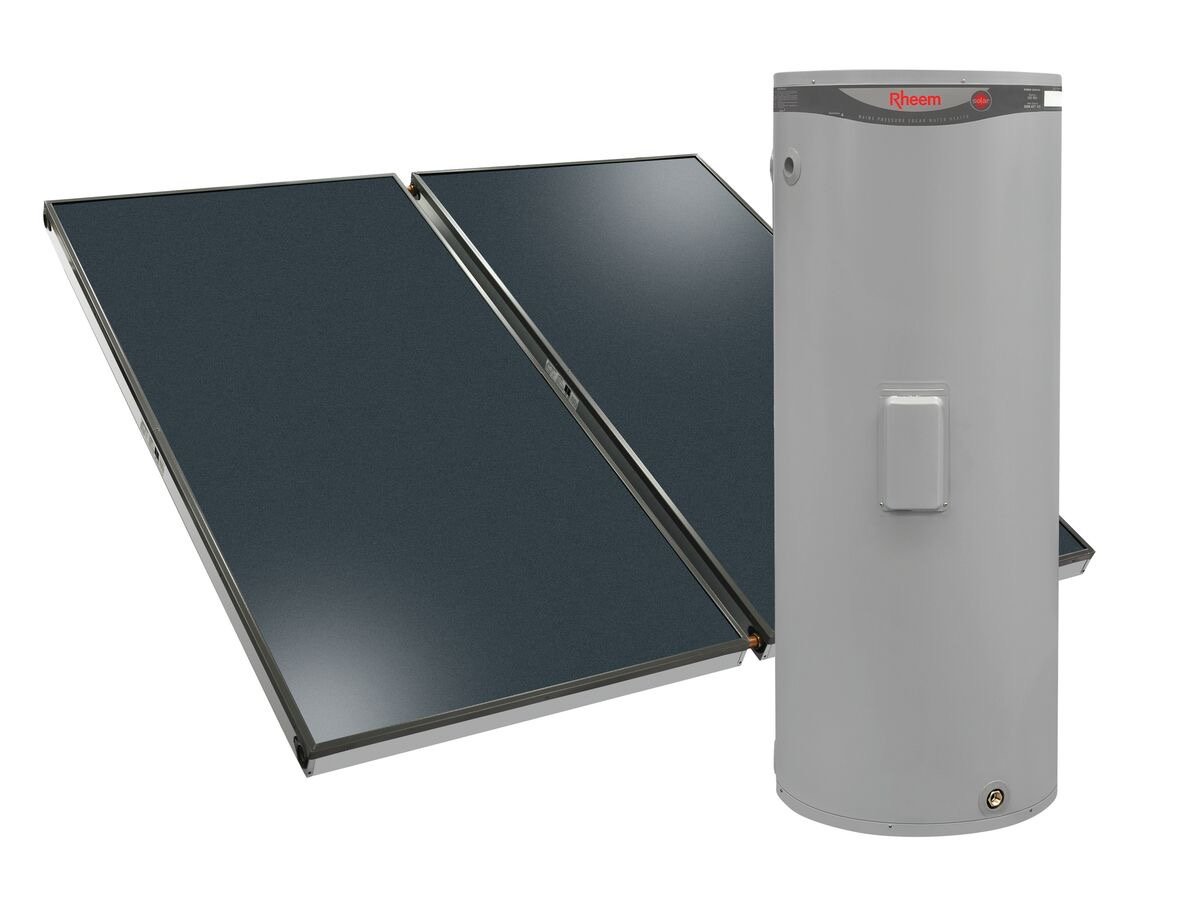Hot Water Heaters
-

Electric Hot Water Tanks
An electric hot water tank, also known as an electric storage water heater, is a common and reliable option for providing hot water in Australian homes. These systems use an electric heating element to warm the water, which is stored in an insulated tank and kept at a set temperature until needed.
Key Features & Benefits
1. Reliable Hot Water Supply – Provides a steady supply of hot water, making it ideal for households with consistent water usage.
2. Available in Various Sizes – Ranges from 25L to over 400L, catering to small apartments, family homes, and even commercial applications.
3. Easy Installation & Compatibility – Can be installed indoors or outdoors, depending on the model and available space.
4. Affordable Upfront Cost – Typically cheaper to purchase and install compared to gas or solar hot water systems.
5. Off-Peak Electricity Options – Many models can be connected to off-peak electricity tariffs, reducing running costs by heating water during low-demand periods.
Installation Considerations
• Energy Efficiency – While electric storage systems are widely used, they can be less energy-efficient than heat pump or solar hot water systems. Look for models with a high MEPS (Minimum Energy Performance Standards) rating.
• Location & Space Requirements – Larger tanks require more space, so consider installation options carefully, especially in smaller homes or apartments.
• Running Costs – If not connected to off-peak electricity, operating costs can be higher compared to gas alternatives.
Popular Brands in Australia
Well-known electric hot water tank brands in Australia include Rheem, Rinnai, Dux, Thermann, Stiebel Eltron, and Bosch.
Is an Electric Hot Water Tank Right for You?
An electric hot water tank is a cost-effective, easy-to-install, and reliable choice, especially for homes without access to gas. However, for improved energy efficiency and lower long-term costs, consider models with off-peak compatibility or explore heat pump and solar alternatives.
-

Electric Instantaneous Hot Water Heaters
An electric instantaneous hot water system, also known as an electric continuous flow hot water heater, provides hot water on demand without the need for a storage tank. These systems heat water as it flows through the unit using an electric element, delivering a continuous supply of hot water whenever needed.
Key Features & Benefits
1. Endless Hot Water – Unlike storage systems, there’s no risk of running out of hot water, making it ideal for households with varying water usage.
2. Compact & Space-Saving – Small and wall-mounted, these systems are perfect for apartments, small homes, and even commercial applications where space is limited.
3. Energy-Efficient Operation – Only heats water when required, reducing standby energy losses associated with traditional hot water tanks.
4. Fast Heating Response – Delivers near-instantaneous hot water, eliminating the need to wait for a tank to reheat.
5. Ideal for Low-Flow Applications – Works well in locations with low-to-moderate hot water demand, such as ensuite bathrooms or kitchen sinks.
Installation Considerations
• Power Requirements – Most units require a high electrical load (often 3-phase power) for effective performance. Single-phase models are available but may have lower flow rates.
• Water Flow Rate – Best suited for low to medium flow rate applications. Large households with multiple taps running at the same time may experience reduced water pressure.
• Temperature Control – Many models come with adjustable thermostats or pre-set temperature settings for safe and consistent hot water delivery.
Popular Brands in Australia
Top brands offering electric instantaneous hot water systems in Australia include Stiebel Eltron, Rinnai, Bosch, Rheem, and Thermann.
Is an Electric Instantaneous Hot Water System Right for You?
An electric instantaneous hot water system is a great choice for small homes, apartments, or areas with limited space, offering energy-efficient and on-demand hot water. However, for larger households or homes with high simultaneous water usage, a gas continuous flow system or an electric storage tank may be a better option.
-

Gas Hot Water Tanks
A gas hot water tank, also known as a gas storage hot water system, is a popular and reliable choice for many Australian households. These systems use natural gas or LPG (liquefied petroleum gas) to heat water, which is stored in an insulated tank and kept at a set temperature until needed.
Key Features & Benefits
1. Fast Heating & High Recovery Rate – Gas hot water tanks heat water quickly and can recover faster than electric storage systems, making them ideal for larger households.
2. Available in Various Sizes – Typically ranges from 90L to 400L, catering to small apartments, family homes, and even commercial applications.
3. Continuous Hot Water Supply – Many gas storage systems feature a rapid recovery function, ensuring a steady hot water supply even during peak usage times.
4. Lower Running Costs – Generally cheaper to run than electric storage systems, especially when connected to natural gas rather than LPG.
5. Energy-Efficient Models Available – Many modern units are 5-star rated or higher, reducing gas consumption and emissions.
Installation Considerations
• Gas Connection Required – A natural gas connection is preferred, but LPG models are available for homes without mains gas access.
• Ventilation Requirements – Most models require outdoor installation, though some indoor models with flue systems are available.
• Pilot Light vs. Electric Ignition – Some units use a continuous pilot light, while others have an electronic ignition system, which can improve efficiency by reducing gas consumption.
Popular Brands in Australia
Leading brands offering gas hot water tanks in Australia include Rheem, Rinnai, Bosch, Dux, Thermann, and Vulcan.
Is a Gas Hot Water Tank Right for You?
A gas hot water tank is a great option for homes with high hot water demand, offering fast heating, lower running costs, and consistent performance. However, if space is limited or you want a more energy-efficient alternative, consider a gas continuous flow system or a solar hot water system with gas backup.
-

Gas Instantaneous Hot Water Heater
A gas instantaneous hot water system, also known as a gas continuous flow hot water system, is a highly efficient and popular choice for Australian homes. Unlike storage water heaters, these systems heat water on demand, ensuring an endless supply of hot water without the need for a bulky storage tank.
Key Features & Benefits
1. Endless Hot Water Supply – Heats water as needed, meaning you’ll never run out, even during peak usage times.
2. Energy-Efficient & Cost-Effective – Only operates when hot water is required, reducing energy waste and lowering gas bills compared to storage systems.
3. Compact & Space-Saving Design – Small, wall-mounted units free up space, making them ideal for homes with limited outdoor or indoor space.
4. Fast Heating & Consistent Temperature – Delivers hot water instantly with precise temperature control, ensuring safe and comfortable use.
5. Available for Natural Gas & LPG – Suitable for homes with a mains gas connection or properties using bottled LPG.
6. Environmentally Friendly Options – Many models have a 6-star energy rating or higher, reducing emissions and energy consumption.
Installation Considerations
• Gas Supply & Flow Rate – Requires a steady gas supply to operate effectively, and the unit size should match your household’s hot water demand.
• Water Pressure & Multiple Outlets – Larger households should choose a system with a higher litres per minute (L/min) flow rate to ensure strong water pressure when multiple taps are used.
• Outdoor vs. Indoor Models – Most gas instantaneous units are designed for outdoor installation, but indoor models with a flue system are available for homes with limited outdoor space.
Popular Brands in Australia
Leading brands for gas instantaneous hot water systems in Australia include Rinnai, Rheem, Bosch, Dux, Thermann, and Stiebel Eltron.
Is a Gas Instantaneous Hot Water System Right for You?
A gas instantaneous hot water system is an excellent choice for households seeking energy efficiency, unlimited hot water, and a compact design. It’s ideal for homes with moderate to high hot water usage, but it’s important to choose the right flow rate (L/min) to ensure consistent performance across multiple outlets.
-

Solar Hot Water
A solar hot water system is an energy-efficient and environmentally friendly way to heat water using Australia’s abundant sunlight. These systems use solar collectors (panels or evacuated tubes) to absorb heat from the sun, transferring it to a storage tank for household use. They are an excellent long-term investment, helping homeowners reduce energy bills and lower their carbon footprint.
Key Features & Benefits
1. Significant Energy Savings – Reduces reliance on electricity or gas, leading to lower energy bills over time.
2. Government Rebates & Incentives – Eligible homeowners may qualify for Small-scale Technology Certificates (STCs), reducing upfront costs.
3. Eco-Friendly Solution – Cuts greenhouse gas emissions, making it a sustainable choice for environmentally conscious households.
4. Reliable Hot Water Supply – Most systems come with a gas or electric booster, ensuring hot water availability even on cloudy days.
5. Long Lifespan & Low Maintenance – High-quality solar hot water systems can last 15-20 years with minimal maintenance.
Types of Solar Hot Water Systems
1. Roof-Mounted (Close-Coupled) System
• Solar collectors and the storage tank are both installed on the roof.
• Gravity-fed system, reducing the need for pumps.
• Ideal for homes with strong roof support and ample sunlight exposure.
2. Split System (Ground-Mounted Tank)
• Solar collectors are installed on the roof, while the storage tank is located on the ground.
• Uses a pump to circulate water between the tank and panels.
• More aesthetically pleasing and suitable for homes with roof weight limitations.
3. Evacuated Tube vs. Flat Plate Collectors
• Evacuated tubes are more efficient in colder climates and capture heat better in low-light conditions.
• Flat plate collectors are durable, cost-effective, and work well in warmer regions.
Installation Considerations
• Roof Space & Orientation – Optimal performance requires north-facing panels with minimal shading.
• Booster System – Choose between electric or gas backup to ensure hot water availability during low-sun periods.
• Initial Cost vs. Long-Term Savings – Higher upfront cost compared to conventional systems, but pays off through lower energy bills over time.
Popular Brands in Australia
Leading solar hot water brands in Australia include Rheem, Rinnai, Apricus, Dux, Solahart, and Bosch.
Is a Solar Hot Water System Right for You?
A solar hot water system is an excellent investment for Australian homeowners looking to cut energy costs, reduce environmental impact, and take advantage of government rebates. It’s particularly beneficial for homes in sunny regionswith ample roof space, but those in cooler climates can still benefit by opting for evacuated tube technology and a reliable booster system.
-

Heat Pump Hot Water Heaters
A heat pump hot water system is one of the most energy-efficient ways to heat water in Australia, using air-source technology to extract heat from the surrounding air rather than directly generating heat through electricity or gas. This makes it an excellent choice for homeowners looking to reduce energy bills and carbon emissions while maintaining a reliable hot water supply.
Key Features & Benefits
1. Highly Energy-Efficient – Uses up to 70% less electricity than traditional electric hot water systems.
2. Government Rebates & Incentives – Eligible for Small-scale Technology Certificates (STCs) and state rebates, making it more affordable.
3. Environmentally Friendly – Lowers greenhouse gas emissions, making it a sustainable alternative to gas or electric storage systems.
4. Works in Various Climates – Advanced models operate efficiently even in colder Australian regions, thanks to improved compressor technology.
5. Reliable & Cost-Effective – Provides consistent hot water while significantly reducing long-term energy costs.
6. Long Lifespan – Quality heat pump systems typically last 10-15 years with proper maintenance.
How Does a Heat Pump Hot Water System Work?
1. The system draws in ambient air and transfers heat to a refrigerant gas.
2. The compressor increases the temperature of the gas.
3. The heat is then transferred to the water in the storage tank.
4. The cooled refrigerant cycles back to restart the process.
Installation Considerations
• Location & Space – Best installed outdoors in a well-ventilated area to optimise air circulation.
• Noise Levels – Some models produce fan noise, similar to an air conditioner, so placement should be considered for minimal disruption.
• Operating Temperature – While efficient, performance may slightly decrease in extreme cold conditions (below 5°C).
• Backup Element – Many models include an electric booster to ensure hot water availability in colder months.
Popular Brands in Australia
Leading brands offering heat pump hot water systems in Australia include Rheem, Rinnai, Stiebel Eltron, Dux, Sanden, and Reclaim Energy.
Is a Heat Pump Hot Water System Right for You?
A heat pump hot water system is a cost-effective, energy-efficient, and environmentally friendly alternative to traditional hot water heaters. It’s ideal for Australian households looking to lower energy bills, reduce carbon emissions, and take advantage of government rebates. While the initial upfront cost is higher, the long-term savings on electricity make it a worthwhile investment.
